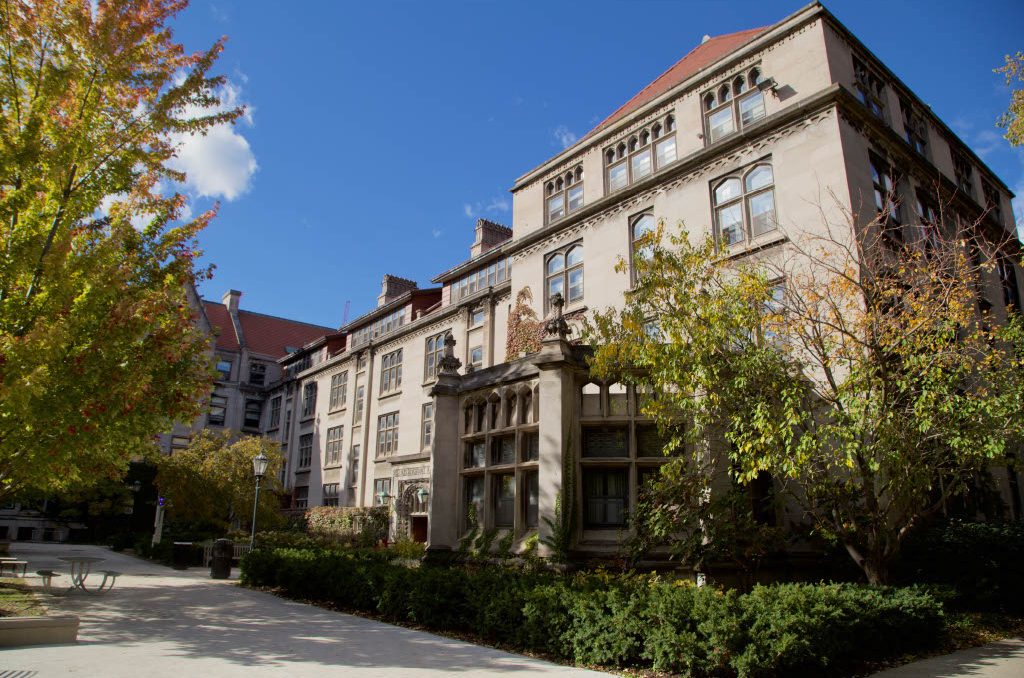As the third week of 2009 comes to a close and toasting glasses and full wallets fade into distant memories, it is easy to forget that this is, in fact, a new year—the novelty of early January has worn off in the flurry of higher education. Why is it that the older we get, the less we become affected by the passing of months? Part of the answer is this: The more we accumulate them, the more years begin to seem like insignificant measures of time—with each birthday, 12 months becomes a smaller and smaller fraction of our lives. However, the perception of length has no bearing on the actual length of 365 days. A year is still an ample amount of time regardless of whether or not we feel that it has passed in the blink of an eye. Interestingly enough, this realization didn’t fully hit me until I picked up a new copy of our very own Maroon and saw yet another article on admissions for the University.
That issue of this paper brought on another realization: The University of Chicago is too preoccupied with numbers.
No, all you econ/physics/statistics majors, not the kind of numbers you see in your assignments. The figures I’m talking about are more in the vein of acceptance and enrollment rates as well as the number of received applications themselves. Perhaps it is because I actually attend this institution, but I have yet to see another university so obsessed with these admissions-related quantities. For some inexplicable reason, the U of C feels the need to continually drop percentages: a 42-percent increase in early applications for the 2008 to 2009 school year, a 15-percent decrease in the same category for the class of 2013, an acceptance rate of around 27.8-percent for both years (thus far).
There are the somewhat ridiculous explanations that are given to rationalize the numbers: For example, in a story from last quarter accompanied by a little blue bar graph, the decrease in early applications was attributed to everything from the failing economy to increased selectivity. The first reason isn’t too hard to swallow, but the second is completely paradoxical—how can one strive for a boost in applications, which inevitably has to lead to lower acceptance rates, and then say that it is this very effect that is hindering students from applying? Furthermore, there lies yet another problem with the claim concerning the “casual applicant.” How is this student defined? It is fairly hard to find one who has “stumbled” upon a college application, filled it out in its entirety (including three essays), and fished $60 out of his pocket just for kicks. Sure, in the past some may have applied to the U of C simply because of its favorable reputation and comparatively higher acceptance rate to schools of similar caliber, but its recent increase in selectivity is still a far cry from hyper-low numbers of HYP—the somewhat cult-ish abbreviation that I have recently learned stands for Harvard, Yale, Princeton—all of which have acceptance rates below 10 percent. I don’t blame the University for trying to make sense of figures, but it seems as though one of the simplest explanations has slipped under the radar: Sometimes some schools are just more popular in some years than others.
What is most troubling is that the University wears its dwindling acceptance rates as a badge of honor. My question: Why? I simply don’t understand the need to proudly announce every year that acceptances are lower than ever when a lower number of admitted students means a greater number of excellently qualified individuals turned down. There is the point of prestige, but even in the pinnacle of faux-prestige commonly known as the U.S. News and World Report Rankings, in which the selectivity of an institution is considered a fairly large factor, the University of Chicago is ranked at a lofty eighth despite its higher admissions rate. The only answer I can muster is that the University wants to compete with those possessing better name recognition such as the aforementioned HYP. If this is to be the case, it would be truly unfortunate.
It is strange how much can alter in the span of 12 months. When I applied last year, whether due to the quirky admissions blog or the Uncommon Questions, I was under the impression that the University of Chicago was somehow above similar schools in the fact that it cared more about the qualitative than the quantitative. Unfortunately, as it becomes more and more apparent that the University is more similar to other schools than I had previously thought, something becomes abundantly clear: My mindset has changed with the passing of an entire year. Luckily the seasons will turn again and hopefully by this time in 2010, there will be something positive to write about on this subject and this article will be nothing but a distant memory.
Alice Hur is a first-year in the College in English and political science.







